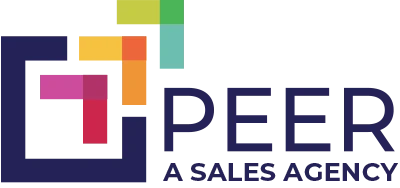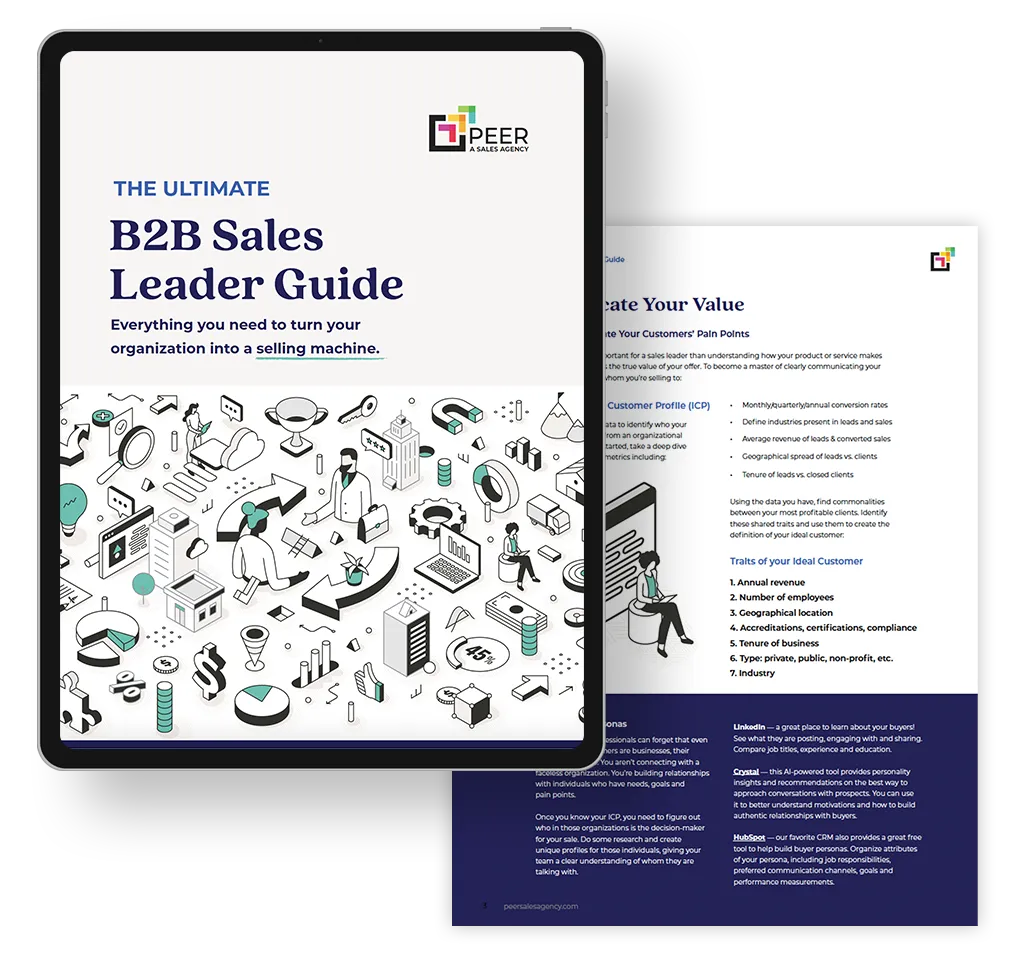What is an Email Nurture Sequence?
Did you know that only around 5% of B2B leads are ready to make a purchase when they engage with you? No wonder your sales team has been complaining that your leads suck. Do they really? Or are they just not ready to buy?
So what do you do about the other 95% that are in some other phase of the buyer journey? You nurture them, that’s what. You wouldn’t meet someone at the gym and get down on one knee by the dumbbell rack would you? You’d start dating to determine if you are a good fit, and through this process, you start building a meaningful relationship. Nurturing leads is a lot like that. But who has time to go on all those dates?
That’s where email nurturing sequences come in. Lead nurturing drip campaigns help guide your prospects through a planned email sequence. These automated emails are designed to keep prospects engaged and interested. So, let’s dive into the world of email nurture sequences and discover their importance in driving sales success.
Difference between a workflow and a sequence
If you use HubSpot, understand that in this article, we are discussing a sequence as a set of automated emails. However, HubSpot does differentiate between sequences and workflows. Sequences are sales emails, and workflows are considered marketing emails. You can read more about the differences here.
The 5 Email Nurture Sequences You Need
1. Welcome/Onboarding Email Nurture Sequence
The welcome or onboarding sequence is crucial for a lead who signs up for your email list. It is also important for a lead who tries a free demo on your site. This is your chance to introduce yourself and set expectations.
Another key aspect of the welcome/onboarding email sequence is recommending further resources or next steps. Whether it’s suggesting additional blog posts, inviting subscribers to upcoming events, or providing links to relevant content, these emails guide customers along the sales funnel and encourage them to take action.
2. Lead Magnet Email Nurture Sequence
A lead magnet nurture sequence is a series of emails that you’ll send to potential leads after they have signed up for a lead magnet, such as a free ebook or webinar. What’s great about this type of sequence is that you can identify your prospect’s pain points by the type of content or lead magnet they downloaded. Then you can segment those leads and provide additional education and resources related to their pain point. This helps build trust and credibility with leads, making it more likely they will buy later on.
3. Re-engagement Email Nurture Sequence
It’s likely if you haven’t done any nurturing to this point, you’ve got a list of leads who have lost interest or fallen off the radar. Enter the re-engagement email sequence, a series of emails designed to reignite their interest and get them back on board.
So, what should these re-engagement emails contain? Remind them of the value you can offer. If you have a new ebook, webinar, or upcoming event, reach out to share the new content.
If you have developed multiple nurture sequences that address pain points, consider sending a re-engagement email containing various articles, each addressing a specific pain point. Then, depending on the article they choose to read, enroll them in a nurture sequence that aligns with that pain point.
4. Event/Webinar Promotion Email Nurture Sequence
When it comes to promoting your event or webinar, a well-crafted email sequence is your secret weapon. This powerful tool has multiple objectives, from nurturing leads and motivating ticket purchases to sending reminders and updating attendees. Here are the key components and objectives of an effective event/webinar promotion email sequence:
- Nurturing Leads: Use the initial emails in the sequence to introduce your event/webinar and highlight its value. Focus on addressing pain points and showcasing how attending can benefit your audience.
- Motivating Ticket Purchases or Sign Up: Create a sense of urgency and exclusivity in your emails to drive ticket sales or sign-ups. Offer early-bird discounts or limited-time promotions to incentivize immediate action.
- Sending Reminders: As the event date approaches, send timely reminders to registered attendees. These emails should include important details such as date, time, and access instructions, along with any last-minute updates or additions.
- Updating Attendees: Keep your attendees informed and engaged by sending relevant updates leading up to the event. Share sneak peeks of what they can expect, highlight featured speakers or sessions, and provide any necessary pre-event preparations.
- Follow-up After the Event: Once the event/webinar ends, continue the conversation with your attendees. Send a post-event email to express gratitude, share key takeaways, and provide resources or recordings for those who couldn’t attend.
5. Long-Term/Newsletter Email Nurture Sequence
One of the best ways to nurture leads over a longer period of time and ensure you stay top of mind is through a newsletter.
The primary goal of a newsletter is to build a relationship with your leads by consistently delivering valuable content. This can include blog posts, industry news, tips and tricks, case studies, and educational resources. The content should be relevant to their interests and pain points, and it should position you as an authority in your field.
To maintain engagement with your subscribers, it’s important to establish a consistent email cadence. This could be weekly, bi-weekly, or monthly, depending on what works best for your audience. By staying top of mind through regular communication, you increase the likelihood of your subscribers thinking of you when they are ready to make a purchasing decision.
How often should you send emails?
When it comes to sending emails, the million-dollar question is: How often should you hit that send button? Well, the answer isn’t one-size-fits-all. It depends on various factors, like the buying cycle and the goal of your email sequence.
For nurturing leads, you want to stay top of mind without overwhelming your audience. We recommend a cadence of 4-7 days.
But here’s the thing: whatever frequency you choose, testing is crucial. Monitor those email metrics like open rates, click-through rates, and conversion rates. Pay attention to unsubscribe rates too – they might indicate that you’re bombarding your audience or not providing valuable content.
How Long Should a Nurture Campaign Be?
There’s no hard and fast rule for the ideal length of a nurture campaign. It ultimately comes down to your specific goals and situation. It’s about finding the right balance needed to communicate and nurture your lead to your end goal.
First, plan the next important step you want your potential customer to take. Then, think about what useful content or information you can provide to help them reach that step. We’ve found that 5-7 emails are a good length for a sequence. But, regardless of the length, you need to test and analyze your data. If you notice your unsubscribe rates climbing, it could be a sign that your email campaign is too long or not providing valuable content.
Best Practices for Lead Nurture Campaigns
1. Understand Your Target Audience
Take the time to create buyer personas and identify the pain points, challenges, and goals of your prospective customers. This will enable you to tailor your email content specifically to their needs and interests.
2. Provide Valuable Content
Share relevant blog posts, guides, tools, advice or educational resources that address their pain points and offer solutions. By offering valuable content, you establish yourself as an industry expert and build trust with your potential customers.
3. Use Storytelling
Storytelling is a powerful tool for showing understanding and empathy. Share stories of past customers who faced similar problems and how your product or service helped them find a solution. By highlighting relatable experiences, you can connect with your leads on a deeper level.
4. Personalization Is Key
The benefits of personalization in email marketing are undeniable. Not only does it increase engagement and open rates, but it also helps build trust and credibility with your audience. When you demonstrate understanding of their situation, prospects are more likely to pay attention and act.
Email segmentation plays a crucial role in personalization. By collecting relevant data about your subscribers, you can create targeted campaigns that speak directly to their pain points and challenges. Personalized emails demonstrate understanding of recipients’ needs by sending content relevant to their industry or referencing their specific role.
5. Only One CTA Per Email
Including only one call-to-action (CTA) per email is crucial. Why? Having just one clear and concise CTA avoids confusion and creates focus for your reader. You’re telling them exactly what you want them to do and making it easy for them to do it. Whether it’s clicking a link, downloading a resource, or scheduling a call, choose a single objective for each email and stick to it.
6. Make Deposits – Not Withdrawals
When it comes to nurturing leads, one concept to keep in mind is to make deposits instead of withdrawals. Now, I’m not talking about your bank account here, but rather the value you provide to your subscribers.
Instead of constantly promoting your products or services, focus on delivering valuable content to your subscribers. This means educating them, solving their pain points, and offering valuable insights. By doing so, you’re building trust and establishing yourself as an authority in your industry.




